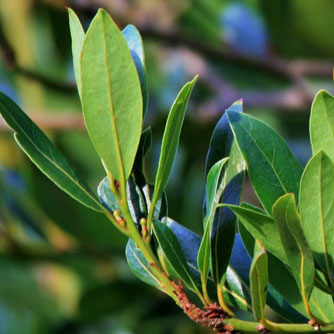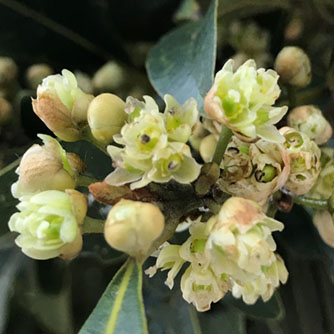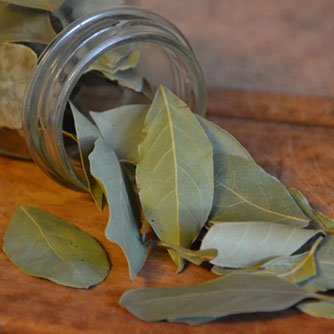Bay Tree
BackBay trees (Laurus nobilis) are a ‘must have’ if you are serious about your herb garden. The fragrant leaves are used to give a rich flavour to soups, stocks, stews and more! Why not under plant your bay tree with herbs like thyme, parsley and rosemary and you’ll be making your own bouquet garni in no time
Also known as bay laurels the ancient Greeks and Romans made wreaths from the foliage and presented them to successful athletes and academics. And now you’ll be able to answer a trivia question on the origins of the expression ‘to rest on one’s laurels’.
How To Grow a Bay Tree
Bay trees are pretty versatile and will grow in full sun or part shade. They are drought, frost and salt tolerant but need to have good drainage. If planting into clay soil help break it up with gypsum.
Bay trees can handle poor quality soils but will grow better if compost and aged manure is dug in at planting. Don’t forget to water the tree in with OCP eco-seaweed to encourage new roots to grow as quickly as possible.
Water trees regularly and deeply until after their first summer and by then they’ll be quite drought tolerant. Trees left to their own devices can eventually get quite tall (up to 10m) but this takes many years as they are slow growing. They can be easily kept small with a prune once or twice a year (they make great topiary or hedging plants). Alternatively grow them in a pot to restrict their size.

Deep green foliage of the bay tree
Unfortunately bay trees are prone to sending up new shoots from their roots (called suckers). Avoid digging the soil around the tree as damage to their roots will trigger the suckers. If the suckers are left to grow they’ll create a dense shrub-like plant. If you want to keep your bay as a single trunk then they’ll need to be controlled (options listed below).
Fertilising and Harvesting Bay Trees
When trees are young fertilise every 2 weeks with OCP eco-seaweed and OCP eco-aminogro to encourage more growth. Established trees in the ground will be happy with a top up of compost/manure/organic fertiliser pellets one or twice a year. If you pick a lot of leaves or are growing your bay in a pot then keep using the eco-seaweed and eco-aminogro combination every 2-4 weeks.
Bay leaves can be picked any time of the year and used fresh from the tree or dried depending on the type of dish. Bay leaves are mainly used whole in cooking and removed before serving although they can be ground and added to soups, stews and stocks.

Bay tree flowers
Pest and Disease Problems for Bay Trees
Bay trees are pretty tough but can still have a few problems:
- Aphids and mites – these common sap sucking pests can be controlled with organic sprays.
- Scale - another sap sucking pest that is extremely common on bay trees. Spray thoroughly with organic insecticide and monitor trees as they often return.
- Sooty mould – this black fungus grows on a sugary substance exuded by sap sucking pests (like scale and aphids). So control the pest (with the appropriate organic insecticide) and you'll control the sooty mould. It does take time though for the mould to flake off even when dead. Take to it with a hose or brush if it’s bothering you.
- Bay trees can be susceptible to a few different fungal spots but it is rarely a big deal if the tree is growing in full sun and otherwise healthy. If they persist and your tree is suffering then spray the foliage every 1-2 weeks with OCP eco-seaweed and OCP eco-aminogro to strengthen the leaves and enhance natural resistance.
- Suckers – It’s best to attack them when they’re small and are easier to control. Spot spray with OCP Slasher Organic Weedkiller to effectively kill the sucker but without harming the main tree. Thoroughly spray the sucker stem for the best results. Alternatively suckers can be cut or pulled off the root or dug up. Keep an eye on the area in case the sucker reshoots.

Dried bay leaves can be stored for a long time


